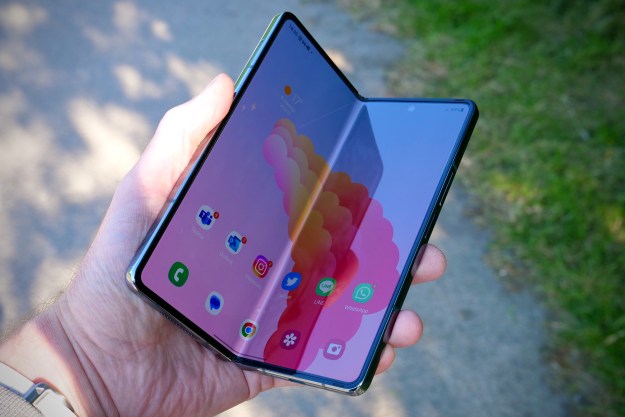The pen, as they say, is mightier than the sword. And the stylus, a pen designed for controlling the computer, has been an enduring presence throughout the history of machine interfaces. While it took well over half a century to start living up to the hype, the stylus has proven to be worth the wait — whether for artists wanting to draw straight onto their screens, people wanting to scribble down (rather than type) notes, or folks who simply want an alternative to the mouse.
How did the stylus go from sci-fi dream to reality? Here are some of the notable milestones along the way.
‘As We May Think’
1945: While trying to solve the problem of information overload for scientists working on national security projects, Vannevar Bush, then-head of the U.S. Office for Scientific Research and Development, came up with one of the most influential concepts in the history of tech. Published under the title “As We May Think,” Bush’s idea was for a kind of “memory extender,” or “memex,” consisting of a document scanner, microfilm memory storage system, touchscreen, and — most importantly here — a stylus so that users could add their own annotations. While the memex was never built during Bush’s lifetime, this was the birth of a half-dozen tech revolutions, pen computing included.
The idea gains momentum

1950s to 1970s: Computers were still out of the reach of regular folks during the 1950s, ’60s and ’70s, but there was nonetheless some innovative work being done with styluses and associated technology. The Styalator might sound like a cross between a beauty product and some fitness equipment, but it was actually one of the first styluses designed for a computing device.
More famous was the RAND Tablet, a graphical computer input device accompanied by a stylus. The RAND Tablet stylus boasted a miniature click switch that sent a signal to the tablet when depressed. Then there was Alan Kay’s Dynabook concept at Xerox PARC, a tablet with a built-in keyboard and a stylus.
None of the three proposed devices made a mainstream splash at the time, but they all helped advance the notion of pen-based computing. They also established the idea of stylus-based handwriting as a possible computer input.
Laying the groundwork for the trackpad

1984: The KoalaPad was a $195 accessory that allowed users to replace their mouse (that is, if they’d even heard of a mouse at the time) with a stylus and trackpad. It worked with the Commodore 64 and was advertised primarily as a drawing tool for kids. At a time when drawing on your computer was about the most futuristic thing imaginable, this neat device was a game-changer. It also laid the groundwork for the trackpad — and the notion that styluses could be used as creative applications on a computer.
An operating system for touch
1990s: Think Microsoft got interested in making a version of Windows that could be controlled via stylus sometime around the debut of the Microsoft Surface? Think again! In the first half of the 1990s, the firm introduced Microsoft Windows for Pen Computing 1.0 and 2.0, reconfigured versions of Windows 3.1 and Windows 95 that could be used under license by the likes of Samsung in its $5,000 PenMaster tablet circa 1992.
Microsoft Windows for Pen Computing didn’t lean into the stylus as much as it could. Nonetheless, it boasted some impressive handwriting recognition that could interpret (accurately — most of the time) a user’s scribbles and turn them into printed words.
The age of the PDA

Also 1990s: The PDA, once a well-recognized term in the portable computing space, is all but forgotten today. It stands for for Personal Data Assistant, which was a pocket-sized computer frequently operated using a stylus. Apple took a crack at the concept with the Newton MessagePad.
However, the biggest early winner in this space was probably the smaller, cheaper Palm Pilot. The Palm Pilot’s low-tech stylus was not anything special as a stand-alone accessory. If you lost it, you could replicate the same functionality with a finger or any other hard pointing device. But, combined with the portability of the device, it showed that the stylus could be a quick, easy, and intuitive way to interact with technology. It looks dated today, but the PDA was a lowertech dress rehearsal for the smartphone.
Styluses go mainstream

2010s and beyond: The stylus has always gone hand in hand with the touchscreen insofar as development is concerned. It therefore makes total sense that the capacitive touchscreen finally going mainstream in the mid-2000s and beyond would lead to a reexamination of the role of the stylus. For a few years, makers of touchscreen devices held off on the stylus, with the belief that swiping and otherwise manipulating on-screen elements with a finger was superior to a pen. But as these touchscreen devices became more capable, more and more of them began investigating the possibilities again.
Samsung created its S Pen for the Galaxy Note series, while Apple got on board with the Apple Pencil. Among the boldest shows of faith in the new era of touch-based computing is Microsoft, which has leaned into it by making Windows both a desktop and mobile operating system. Machines like the Surface Studio could be operated using the Surface Pen, a high-precision, pressure-sensitive stylus that boasts “precision ink” on one end and a digital rubber eraser on the other. Thanks to features like stylus’ ability to sense pressure (making them more useful for applications like drawing), we’re finally living in the age of the stylus.
Editors' Recommendations
- Tech companies still don’t understand watch design
- Adonit Pro 4 impressions: A Basic But Affordable Stylus




